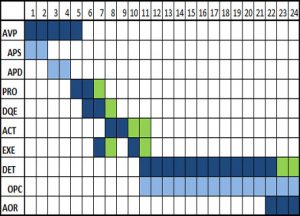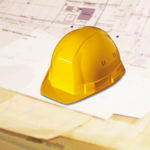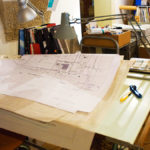The construction manager who directs the construction of a building for the client, organizes the construction according to a clearly defined sequence of steps that maximize the quality of the final work. Most often, it is therefore the architect who is the construction project manager, being the designer of a building, he is also the best suited to supervise its construction and oversee all the stages of an architectural project, sometimes in collaboration with a technical design specialist , economist or other partners, depending on the particularities of the project.
In many countries, the architect is the only actor who is legally competent to carry out the design and planning project leading to the request for a construction permit as defined by the local law. Although the missions that do not require the intervention of an architect can be entrusted to other professionals, the architect is the most qualified to carry out all the missions, from design to construction and until reception.
The missions presented below represent the general case, they may nevertheless differ slightly according to the individual characteristics of each project and the involvement of the project manager. More specifically, these steps are often regrouped or accelerated in the simpler phases for the design and construction of houses, with pictures of each step during the construction of a city house.
1. Feasibility of the architectural project and authorization
Meeting with an architect

At the first contact, the construction project owner expresses his expectations to the architect who helps him to specify his needs and define a program to carry out his architectural project in the best conditions.
The architect informs the client about the conditions of the site, the construction and functions of the building, and any additional expertise to be contracted as well as the administrative procedures required. He asks about the client’s budget and eventually provides assistance to complete the financing of the project. The architect describes all the services he proposes to deliver, the guarantees he provides and the corresponding fees to be agreed with the client. If the client does not already own or have use of a suitable land plot, the architect can also assist the client in the quest for a potential construction site.
The architect then offers his services for a first mission of feasibility study andrealization of the first sketches that will synthesize all the queries formalized together with the client, for a defined cost. If the contracting authority accepts the architect’s terms, the latter then initializes the following sequence of steps towards the realization of an architectural project.
Sketch Studies
or diagnostic studies in the case of works on an existing building
The architect presents the results of his first feasibility study of the desired building and completes an initial sketch based on the various parameters related to the construction site, the building characteristics selected by the client and his financial constraints. This initial sketch enables an initial visualization of the project inserted in the site. In case of the rehabilitation or renovation of an existing building, the architect also provides his technical and architectural diagnostic study to realize the desired modifications and the required works.
The architect also specifies a first estimate of the costs of the options that meet the expectations of the contracting authority. The architect may also propose several options that focus on one or another of the conditions mentioned by the contracting authority: minimizing construction costs, minimizing the costs of use and maintenance, maximizing the building durability, optimal insertion in the natural or urban environment, architectural quality and/or originality, etc.
At this stage, nothing implies any further commitment from the client.
Preliminary design studies
If the client is satisfied with the initial sketch or diagnostic studies, he may decide to continue the works according the initial propositions of the in the sketch studies.
Preliminary draft
At this point in the relationship, the architect provides an accurate description of the various options selected for the building project and a precise estimate of the cost and duration of the works. A certain degree of tolerance may be granted depending on the size of the project and the current state of progress of the study and construction works. This working document is used to finalize the architect’s offer of services.
Final draft
Final adjustments are made according to the options selected by the project owner, the choice of construction materials is finalized, the various technical services and all the works are specified with their integration into the project and construction. Depending on the country and the local climate, an energy supply and thermal balance study may also be specified in the relative documents submitted when filing for the construction permit application.
A precise financial evaluation of the entire project is then finalized. Documents that detail the definitive characteristics of the architectural project and the agreed services are formally drafted. They form the contract which specifies, point by point, all the services provided by the architect to the contracting authority during the following phases.
Construction Permit dossier
Beyond the technical documents, plans and definitions of materials, networks and fluids, the architect prepares all the administrative and legal documents, necessary for the constitution of an application for a building permit which he submits to the competent authority.
The architect follows the instructions of the file by the local authorities, bringing any additional documents required and helping to integrate the necessary third party expertise in agreement with the client until the building permit has been obtained.
2. Detailed design of the building
Project studies
The architect then prepares detailed plans for all levels of the building (s), elevations, facades and additional perspectives that ensure a good understanding of the whole project down to the smallest details. Depending on the specific needs of each project, technical consultancies selected by the client upon the advice of the architect conduct parallel development of their action plan, in close collaboration with the architect for the successful integration of their expertise throughout the project.

3. Planning of the construction
Execution studies and plans
Contractor consultation dossier
Following the finalization of the design, the architect constitutes the consultation dossier for the different construction contractors which details all the technical and administrative characteristics of each segment of the project, estimating the respective budgets, so that the intervening companies propose reliable estimations for their respective works. The consultation dossier also specifies the framework of the intervention of the companies and their relations with the client and the architect.
Execution plans
Following the contractor consultation dossier, execution studies are concerned with the technical realization of the project: the plans of execution at the appropriate scales, the calculation notes and the usage specifications for the construction site to enable the different contractors to carry out the construction of the whole building.
Beyond the architectural plans, the contracting authority may, if necessary, entrust the architect, assisted by technicians of the required specialties, to draw the detailed construction plans and quantitative specifications of certain segments in a complementary mission to the execution studies. The plans of the architect do not replace the technical plans of the experts in any way, for assembly and implementation on the site, which are always due to be realized by the specific contractors.
4. Selection of contractors for the construction
Assistance for construction contracts
The architect consults the companies able to intervene and analyzes the offers of the contractors according to well defined procedures. Negotiations can be conducted on behalf of the client and modifications can be made to fit into the allocated budgets.
The architect assists the contracting authority in selecting the various building contractors according to the criteria chosen with the contracting authority. He may suggest the services of a given company in the light of past experience and guarantees of seriousness which he has already witnessed. Following the selection of the companies, the architect prepares the markets devolved to each company; they contractually commit to the contracting authority on costs and deadlines which they must comply with.
5. The construction works
Direction of works execution
The architect supervises the preparation of the construction site and organizes the participation of the different specialties to ensure the compliance with due processes, the completion of of each company’s commitments and the right implementation of the plans.
Construction site management
The construction project manager intervenes on the construction site with the various contractors to ensure the proper execution of the various phases of the construction of the building:
- Earthworks and linking with roads and utilities networks
- Structural works: stability and solidity of the building (foundations, structure)
- Secondary works: waterproofing, aesthetics and comfort
The project manager coordinates the construction site meetings, prepares and distributes the reports to all the parties concerned. The architect also supervises the payments to the contractors and the accomplishment of the corresponding services in due time.
Scheduling, coordination and supervision of the construction works
The analysis of the basic tasks that make up the execution studies and the construction works, their sequencing and the critical points in this sequence of interventions, constitute the mission of coordination and planning, which complements the construction project management. The aim is to carefully plan the optimal interweaving of the various interventions of the contractors in order to implement the fastest and least expensive construction.
6. Delivery of the building to the client
Assistance for operations of reception
The architect controls all the works carried out and the realization of the services in their finest details. He also takes care of the finalization of the invoices to the various service providers and balances finalizes the construction site accounts.
If required, the client confirms that all regulatory obligations have been complied with, together with the architect and the qualified specialist. Depending on the country and the requirements of the client, such obligations may include norms for sustainable development, energy consumption, air quality, noise reduction, etc.
The architect then closes the file of completed works and thus confirms the conformity of the works in correspondence with the terms of the contracts of guarantees. Penalties may be imposed to contractors who exceeded the time allowed for their intervention.
Once all the works have been validated by the client and the construction project manager, they agree on the final reception of the building and the complete passing of responsibility for the building (or buildings) to the client.





Thank you for pointing out that an architect will prepare a detailed plan for all of the levels. Building a commercial building seems like it would be an awesome project. Hopefully, business owners find the best contractors to help them do this.
Thank you for informing me that a client and builder will go over a sketch of a design to see what can be built to meet the needs of the client. Yesterday, I was talking to my sister and she mentioned that she wants to start investing in commercial buildings by building then selling them. I hope she plans everything out and looks for trustworthy construction companies.
I like how you mentioned that starting from the design all the way until the reception, an architect is qualified to carry out each step in the process. The owner of the company I work for is thinking of looking for a building design specialist because she’s considering constructing a new office to have our headquarters in. I think it’s best for the owner to consider all of her options when choosing a designer that can help build a suitable office to house the headquarters of the company.
I didn’t realize that there were so many steps that goes into the design of a building. You mentioned that there is first a preliminary draft, where they come up with all the possible options for the building, then go from there. My brother is wanting to have a new office built for his dental office, and wants to have things flow just right. I wonder if he has started talking with a construction designer about what things should look like?